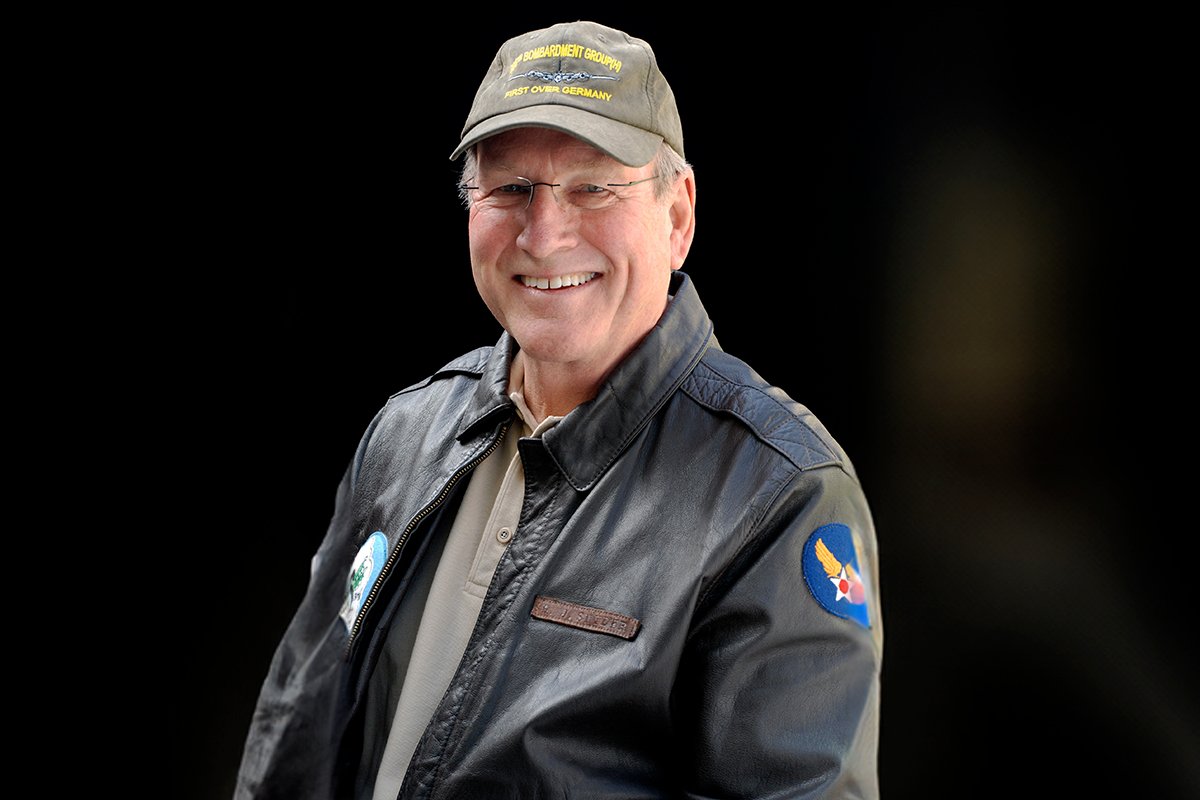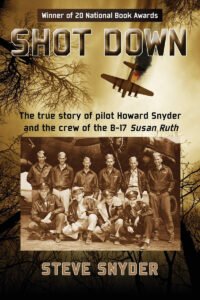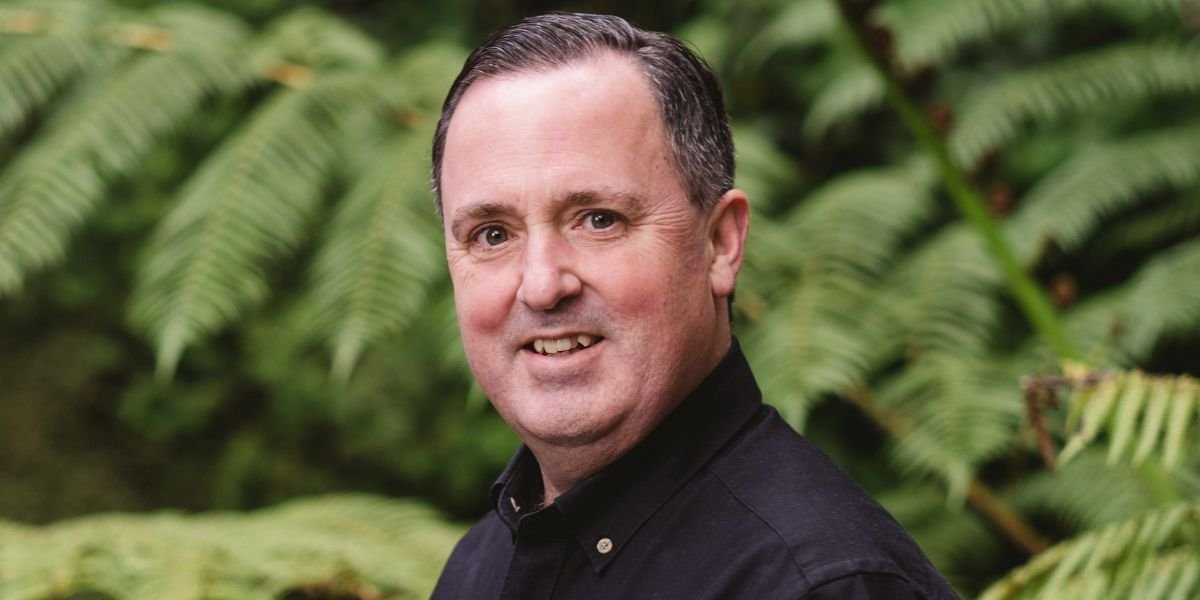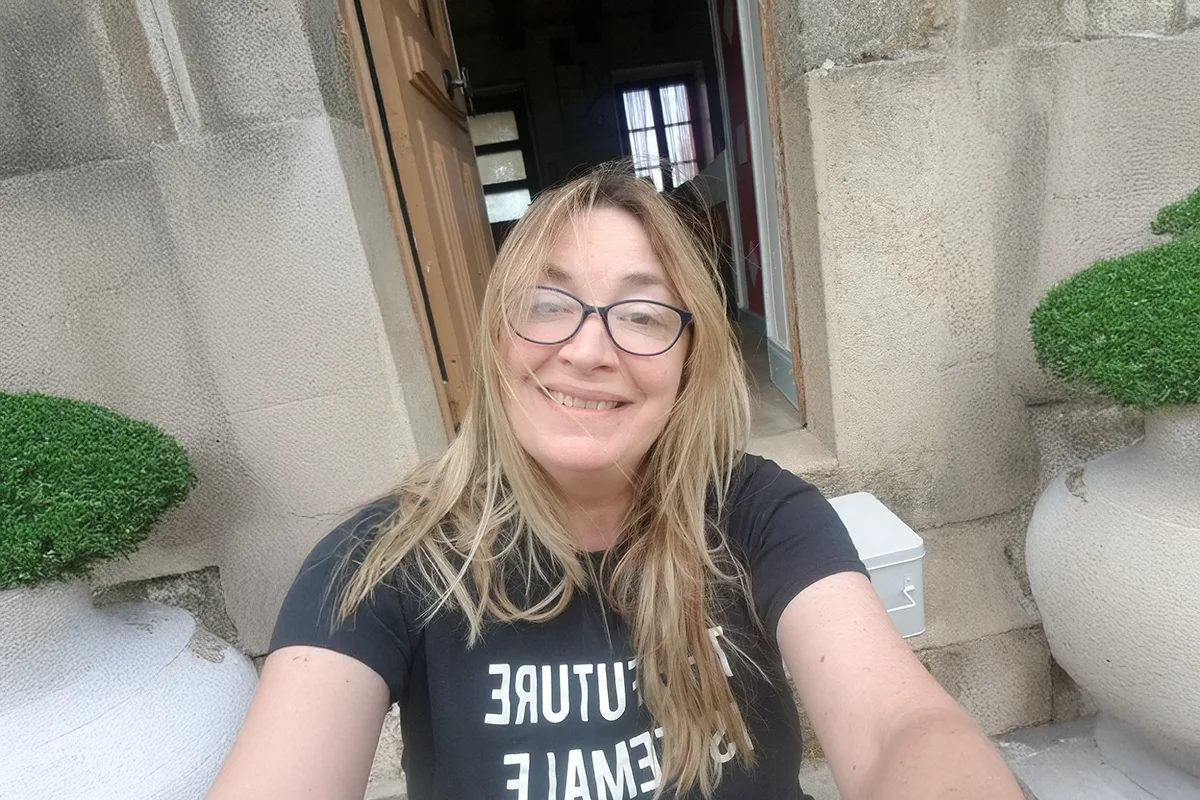Steve Snyder Inspires With His Journey To Preserve World War II History Through His Award-Winning Book

Photo: Steve Snyder, acclaimed author of SHOT DOWN, at a presentation sharing his father’s extraordinary WWII journey and his research passion.
Diving Deep Into Wartime History
Steve Snyder shares his passion for uncovering his father’s World War II story, preserving history through meticulous research, writing, and advocacy with his award-winning book SHOT DOWN.
Steve Snyder is the epitome of a historian with a heart. With his background steeped in personal discovery and a drive to honor those who served bravely in World War II, he has masterfully transformed his father’s wartime experiences into a compelling and essential narrative. His book, SHOT DOWN: The True Story of Pilot Howard Snyder and the Crew of the B-17 Susan Ruth, is more than an account of historical events—it is a finely crafted tribute to the sacrifices, courage, and resilience of those who faced the harrowing realities of war. Garnering 25 book awards, SHOT DOWN stands as a testament to Snyder’s unparalleled dedication to preserving history with authenticity and emotion.
Mosaic Digest magazine is proud to feature this insightful interview with Steve Snyder, who embodies the perfect blend of diligent research and passionate storytelling. Snyder’s role as president of the 306th Bomb Group Historical Association and his active involvement with the 8th Air Force Historical Society further highlight his commitment to honoring the memory of individuals who risked and often gave their lives for freedom. Through Snyder’s work, he ensures their stories remain immortalized.
In this issue, you’ll discover the fervor and perseverance that ignited his quest, starting from humble piles of wartime letters to his mission of becoming an author, historian, speaker, and advocate. His journey serves as an inspiration—not only to historians but to anyone pursuing the remarkable task of preserving family legacies amidst humanity’s greater, collective history. Prepare to be captivated by the wisdom and insight revealed in this conversation with an extraordinary author who bridges the gaps between past and present with remarkable grace.
Steve Snyder’s dedication to honoring World War II heroes through compelling storytelling reflects humanity’s enduring quest to preserve history.
Could you describe what first ignited your passion for telling your father’s story and how that transformed into writing Shot Down?
Growing up, I knew the basics of my father’s war history, but it wasn’t until I retired in 2009 that I had the time to really delve into it deeply. At that time, I had no intention of writing a book. I just wanted to go through and organize all the information my parents had kept from the war years. Two items were really significant.
“Reading those letters was fascinating, and I became totally
captivated by the story of my father and his crew.”
– Steve Snyder
One was a diary that my father had written while he was missing in action about his plane being shot down, which is absolutely riveting. The other item was all the letters my father had written to my mother while he was stationed in England. In them, he wrote about flying combat missions, life on the air base and in the surrounding villages, trips into London and escapades of his crew. Reading those letters was fascinating, and I became totally fascinated with the story of my father and his crew. It became my passion.
After three years of dedicated research, I concluded that the story was so unique and so compelling that people needed to know about it, so I decided to write a book.
How did your background in economics and your long career in sales inform your approach as a historian and author?
My career in sales did not play a role in writing the book, but it was a huge factor in promoting the book. No matter how good a book might be, unless people know about it, it doesn’t matter. It is all about exposure. Therefore, I entered many book contests and won awards in most of them. I was very active on social media, especially Facebook, YouTube, and LinkedIn. I contacted every entity I could find that did book reviews. I developed a PowerPoint presentation and was very successful in making appearances all over the country. When Covid hit, I switched to presentations and interviews on Podcasts. I relentlessly worked promoting SHOT DOWN for hours every day.
“Being a combat crewman in the 8th Air Force was the most dangerous duty assignment in the U.S. military during World War II.” – Steve Snyder
What were the greatest challenges you encountered during the four and a half years of research, and how did you overcome them?
I really didn’t encounter any challenges as I was blessed to have so much detailed information about my father and his crew. The entire SHOT DOWN Story is written from first-hand testimony by the people who were involved in the events that took place; such as written and oral accounts from my father and the other crewmen who survived, testimony from members of the Belgian Underground, 306th Bomb Group and Squadron Combat Diaries and Mission Reports, and an U.S. Army War Crimes Investigation Report.
I could not have written the book without the efforts of Dr. Paul Delahaye and Jacques Lalot who were young boys during the Nazi occupation of Belgium. Later in life, they interviewed many Belgian patriots about the events that took place and documented their testimonies. They provided me with unbelievably detailed information about events that would have been lost forever without their dedicated research. I owe them a huge debt!
I have also made eight trips to Belgium (the first in 1994 with my parents) to visit many locations where the events took place and been inside rooms of homes and farms houses where my father stayed.
How has your role as President of the 306th Bomb Group Historical Association and your involvement with the 8th Air Force Historical Society influenced your writing or research?
In reality, my writing and research influenced my involvement with the 306th BGHA and the 8th AFHS. From all my research, I gained such an appreciation for the sacrifice and courage of the men who flew combat mission in the 306th Bomb Group and the 8th Air Force. More men were killed while serving in the 8th Air Force than all the Marines fighting in the Pacific. Being a combat crewman in the 8th Air Force was the most dangerous duty assignment in the U.S. military during World War II.
Becoming a Board Member of the two organizations was a way to honor their service and bravery.
Were there any particularly poignant or surprising moments you uncovered about the crew of the B-17 Susan Ruth—perhaps something you didn’t expect to find?
Absolutely. In addition to my father’s letters, my mother kept the letters written by other members of the crew and by many of their family members. Extremely poignant were letters written by wives, mothers, and other family members (excerpts of which are included in the book) after my dad’s B-17 (named the “Susan Ruth” after my oldest sister who one year old when he went overseas) was shot down by German fighters and all the crew reported as missing in action.
However, the biggest surprise was finding and becoming friends with Hans Berger, the German Luftwaffe pilot who shot down my dad’s plane. Fortunately for me, Hans became a translator after the war and spoke perfect English.
Hans told me that the gunners on my dad’s plane shot him down at the same time he shot them down, and he had to bail out. He also gave me great information about what it was like to go up against all those bombers and fighters of The Mighty Eighth Air Force
How do you balance factual accuracy with narrative flow, especially when writing about true historical events and real people?
I purposely did not add anything to the story about the crew and the Belgian people who risked their lives to help them. I wanted everything I wrote to be 100% factual and not inject any interpretation, embellishment, or assumptions. The story is so compelling that I didn’t need to do it. Again, I am so very fortunate that I had so much documented material to work with.
I based the flow of the book chronologically around the letters written by my father up to the day the plane was shot down. After that, I then followed the chronological order of what happened to each of the eight crew members who were able to bail out of the plane.
What I did add was a significant amount of historical information and anecdotes about and surrounding the war to put the story in context and provide background.
Finally, what piece of advice would you offer to other authors who are embarking on writing historical narratives inspired by personal or family stories?
Never stop researching. Continue to find more details. Keep looking for other resources (people, websites, organizations, books) to obtain more information.

EDITOR’S NOTE
A riveting, well-researched tribute to WWII heroism, blending personal stories, history, and photographs for an unforgettable reading experience.
Shot Down is a gripping and richly detailed account of a B-17 bomber crew’s harrowing journey during WWII. With vivid personal accounts and over 200 photographs, Snyder masterfully brings to life the bravery and resilience of the men aboard the Susan Ruth and the heroic efforts of Belgian civilians who risked everything to save them. The book melds historical context with intimate, heart-pounding stories, offering a front-row seat to the horrors and humanity of wartime. A compelling tribute to courage, perseverance, and sacrifice, this book is both informative and deeply moving.












